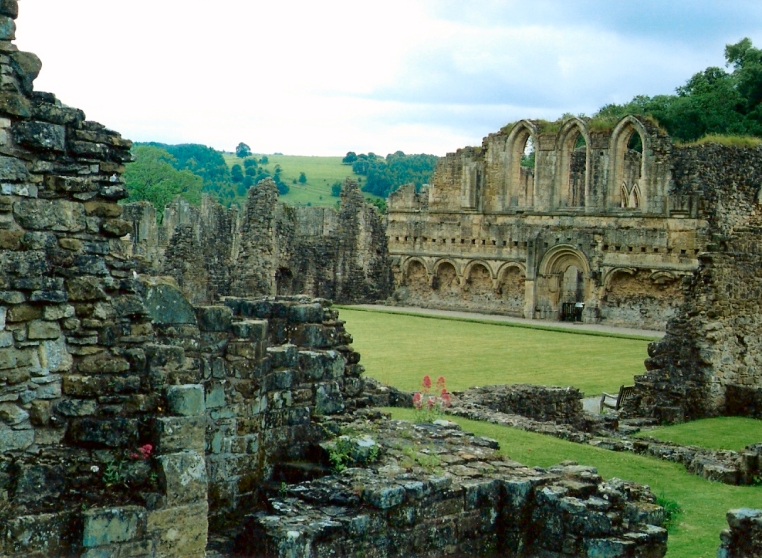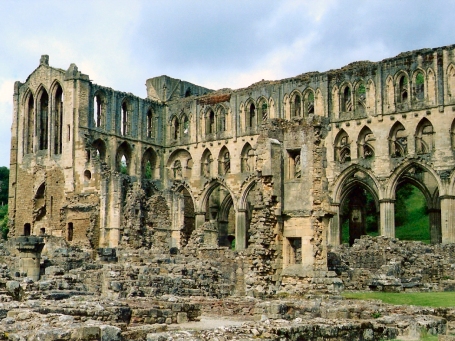
Rievaulx Abbey sits in a turn of a narrow valley along the River Rye in Yorkshire. Built atop several man-made terraces, the abbey commands a broad view of lush meadows framed by the tree-covered walls of the valley. Founded in 1132, Rievaulx was the first Cistercian abbey in the north of England. Under the rule of its third abbot, St. Aelred, the community grew to 150 choir monks and 500 lay-brothers. By the time the abbey was suppressed in 1538 there were only twenty-two monks remaining.
In 1131 St. Bernard of Clairvaux initiated plans for the foundation of Rievaulx which was to serve as the headquarters for the systematic colonization of northern England and Scotland. In 1132 twelve Clairvaux monks, led by their abbot William, settled in the valley of the River Rye. By the end of the 12th century, under the leadership of abbot Aelred, Rievaulx had established five daughter-houses. Because no chronicle of the abbey survives very little is known of the history of Rievaulx after the death of Aelred.
Due to borrowing against future income and an epidemic of sheep murrain, the abbey was heavily in debt by the end of the 13th century and was taken into royal protection, with the Bishop of Durham appointed as keeper. The early fourteenth century was also troubling to the abbey. After the English defeat at the Battle of Bannockburn in 1314, the north of England was over-run by the Scots army. Rievaulx, like Byland Abbey, was plundered in 1322 when King Edward II was surprised and defeated by the Scots during the Battle of Byland at Shaws Moor.
View more photographs of Rievaulx Abbey at Travels in the UK, a travelogue by the Webmaster: Rievaulx Abbey Photo Gallery.

A monastery is a building or complex of buildings comprising the domestic quarters and workplaces of monastics, monks or nuns ...Read more at Wikipedia.

Cathedrals, as well as many abbey churches and basilicas, have certain complex structural forms that are found less often in parish churches. Read more at Wikipedia.